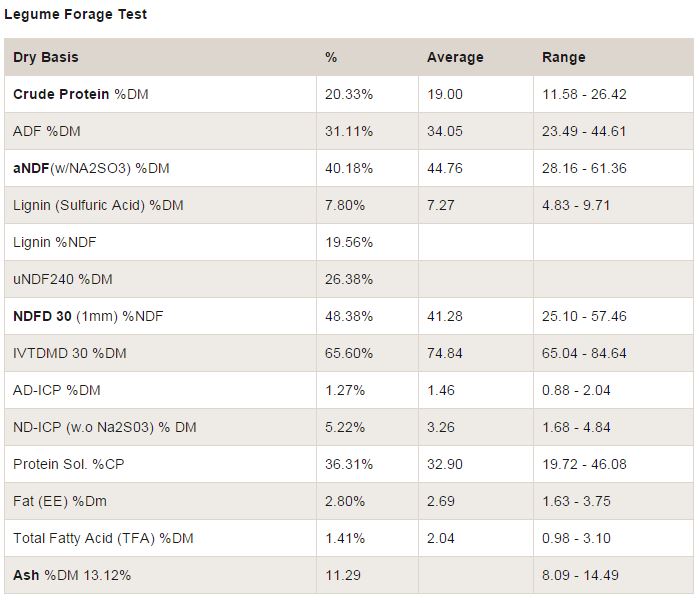



Has Cow Nutrition Changed Since the 1980s?
Prescribed forage formulae introduced to operations thirty years ago may need updating after years of advances in cow nutrition and forage analysis.We know more about forage and feeding. Meanwhile, cows are producing 50 per cent more milk.
Farms were once told that forage should be 20 per cent protein, 30 per cent acid detergent fibre (ADF) and 40 per cent neutral detergent fibre (NDF).

Minnesota farms followed this advice as a 20-30-40 rule, according to Jim Paulson, dairy extension educator at Minnesota University and was the formula for relative feed value at 150 (RFV).
"This was considered a good goal for the forage quality needed for feeding lactating dairy cows," writes Mr Paulson.
However, he adds that thirty years is a long time, in which scientists have come to a greater understanding of fibre analysis; incorporating the role lignin plays as an indigestible fiber component.
And, he writes that we have herds producing 50 per cent more milk per cow per year than 30 years ago. Relative Feed Value was changed to Relative Forage Quality or RFQ. The question in 2015 is: Is 150 RFV high enough for high producing dairy cows today?
Under the RFV system, ADF was used as an indicator of digestibility and NDF was used as an indicator of intake. While NDF still is used as a good indicator of intake, ADF has proven less reliable in predicting digestibility. RFQ uses NDF Digestibility (NDFD) to account for DMI and true TDN, and is calculated (Moore and Undersander, 2002a) as: RFQ = DMI ( per cent of BW) × TDN ( per cent of DM) ÷ 1.23. The TDN in RFQ measures the total energy consumed by the animal, not just fiber, but also CP, NDF, fat, ash and NDFD.
Relative forage quality uses lignin to determine Neutral Detergent Fiber Digestibility (NDFD). This number is a percent of the NDF that is digestible in a given time period in the rumen.
Thirty hour NDFD is a common figure used by nutritionists to estimate the fiber digested in the rumen to determine a reasonable energy value for the forage, writes Mr Paulson.
Thirty hours is fairly representative of the average time forage spends in the rumen. NDF24 and NDF48 are also used as well as uNDF240; which tells us NDF that will not be digested in 240 hours or is considered indigestible NDF.
On the forage test below, you can see values for many of these forage fiber measurements. These are numbers that will increasingly come into discussions of your forage by your nutritionist. I have highlighted values you will want to watch more in the future.
Gauging RFV and RFQ Values
What are the RFV and RFQ values for the forage shown below?
As I have seen before, the RFV is higher at 145 than the RFQ at 138. It is quite possible to have a lower RFQ than RFV in pure alfalfa hay. It does depend on the lignin content which can vary from cutting to cutting due to weather conditions which may or may not favor greater lignin production. Greater amounts of lignin lower NDFD. Is this forage good enough for high producing dairy cows?
If you look at the forage summaries below, you will see while we are hitting our original average of 40 per cent NDF, a large percentage of the total forage tests at Dairyland Labs are lower than 40 per cent NDF.
This would indicate to me that a growing group of alfalfa producers are consciously cutting their alfalfa at lower maturities in order to lower NDF and increase NDFD.
This shows up in the second bar graph. If we are trying to achieve NDFD values over 50 per cent, we clearly have to cut earlier. Dairy producers have found that this quality of alfalfa produces more milk and you can feed more of it. It also fits nicely with higher corn silage diets.
Lower Lignin Alfalfa
On the horizon is lower lignin alfalfa. This alfalfa will be about 10 to 15 per cent lower in lignin. This will improve NDFD and RFQ. This could be a major improvement in forage quality for high producing dairy cows in the future. It might be like a BMR of alfalfa.
Our experience with it so far is limited but it will be worth considering. The question will be: Will you continue a 4 cut system and aim for higher quality or consider a 3 cut system for more yield of similar quality that you have now?
I believe many dairymen will stay with the 4 cut system, writes Jim Paulson. Doing so should enable producers to harvest alfalfa hay/haylage of 175 RFQ. I believe that will be the new number we will be targeting.




